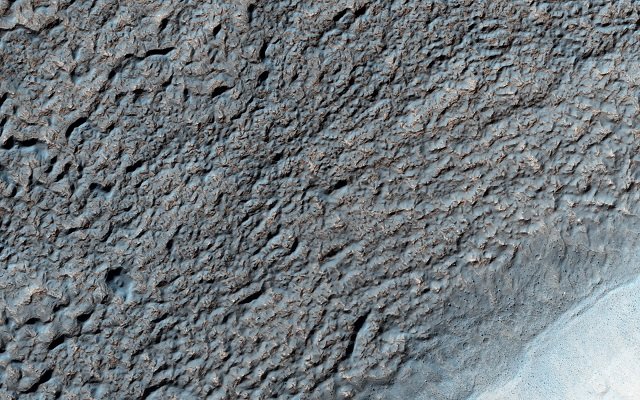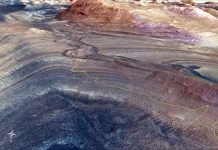
Glaciers are made up of fallen snow that compresses into large, thick ice masses over many years.
The formation and change of glaciers can show information about the climate.
Although water ice is not stable across Mars’ mid-latitudes, scientists do find glacier-like forms (GLFs) in the areas.
In a study published in Icarus, researchers examined the history of GLF on Mars.
Researchers visually analyzed 1293 GLF images from the Context Camera (CTX) database. CTX is a part of Mars Reconnaissance Orbiter. It makes observations simultaneously with the high-resolution images.
Several environmental parameters were analyzed. These included longitude, latitude, elevation, orientation, and relief (i.e. steepness). In a GLF reconstruction case study, researchers chose a climatically important zone based on global climate modeling on Mars.
Researchers found that a total of 436 GLFs showed strong recession: 197 in the northern hemisphere and 239 in the southern hemisphere. This suggests that there were global rather than regional or hemispheric climate conditions.
The recession mainly happened in the low latitude between 25o – 40o and in areas of high relief. This suggests that ice is being preferentially removed from these areas.
The GLF reconstruction showed that the GLF has receded in the area by 70% and has lost an ice volume of about 0.31 km3. The global ice volume loss of GLFs on Mars is estimated to be about 135 km3.
In the future, researchers will consider the volume change of individual recessional GLFs to refine the estimation.
Copyright © 2018 Knowridge Science Report. All rights reserved.




